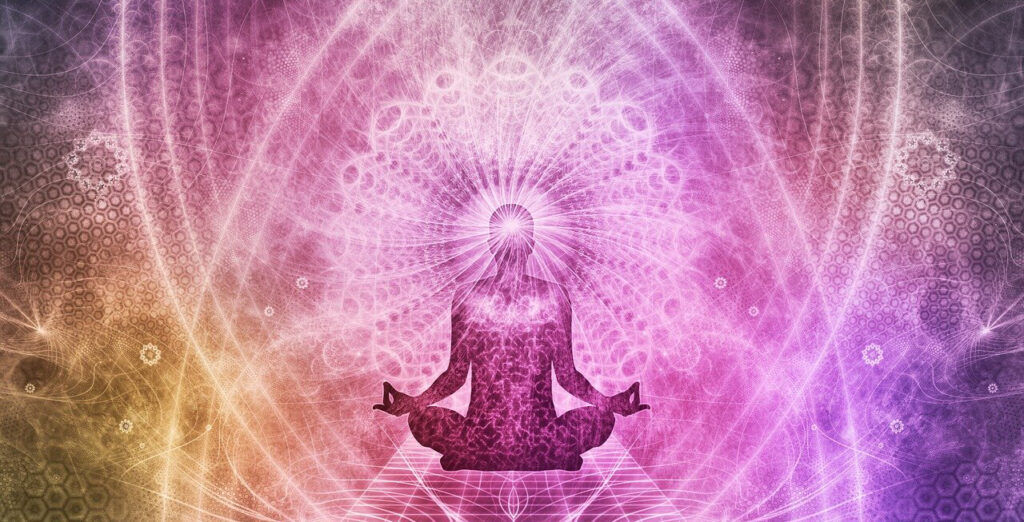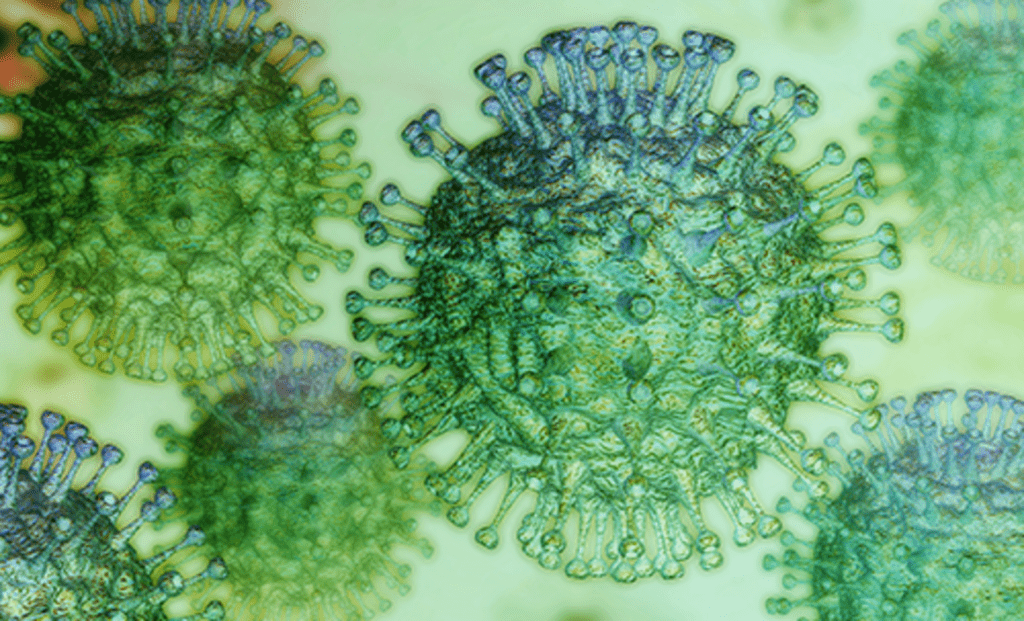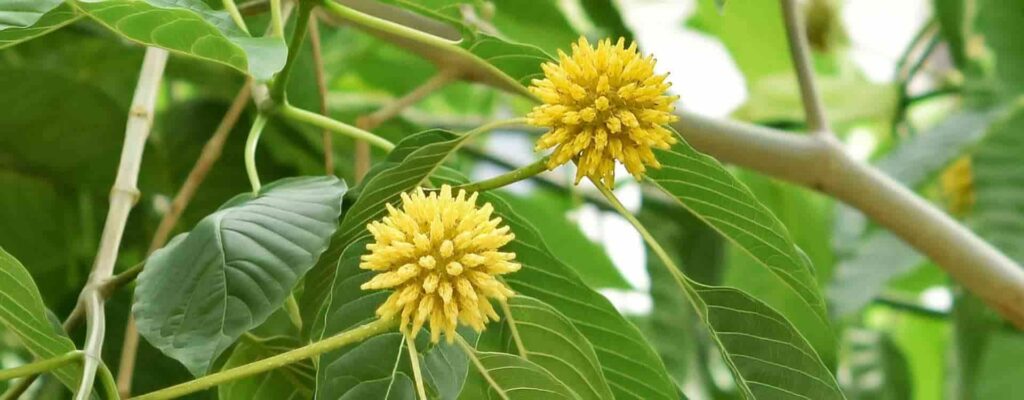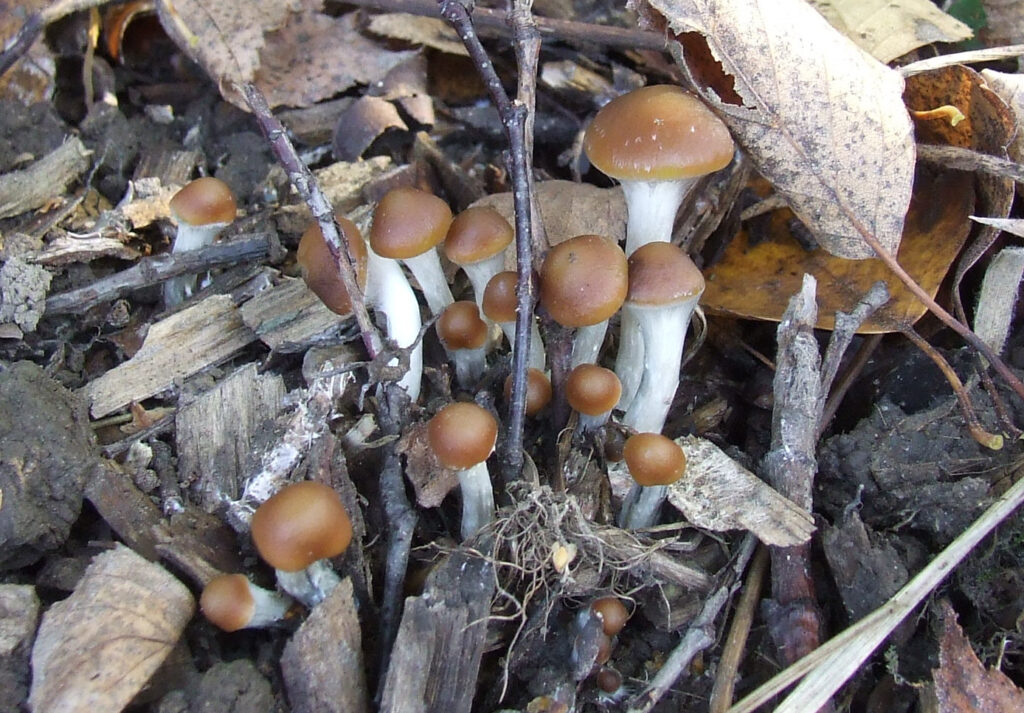Ayurveda and psychedelics

There is something of a psychedelic revolution taking place in medicine, hot on the heels of cannabis legalization in many jurisdictions. Professionals in almost every field of health care are learning more about psychedelics, not only to keep up with the population they serve, but because of the growing body of research demonstrating significant therapeutic benefits. As a practitioner with more than 20 years of clinical experience using such substances, I know of their benefits (and limitations) very well. Although psychedelics are widely used by other Western herbalists, among those in the field of Ayurveda and Yoga, there remains some resistance to psychedelics. I have a few thoughts about why this might be.
In part this resistance is justified by a literal analysis of the traditions themselves, as there appears to be little mention of psychedelic substances in either Ayurveda or Yoga, and moreover, a warning against consuming “intoxicating” substances. As a psychotropic herb, cannabis is one of the notable exceptions mentioned in the corpus of Ayurveda, although the claim that it is the herb called vijaya mentioned in the Sushruta samhita remains a speculation. Among the earliest, definitive expositions of cannabis in Ayurveda is found in comparatively late texts such as the Dhanvantari nighantu from the 13th century CE. Outside the literature of Ayurveda, there are Hindu-Buddhist tantric texts dating back as far as the 7th century that make reference to the ritualistic use of cannabis.

Traditionally, cannabis use in India has been mostly limited to wandering babas and sadhus, spiritual seekers (sannyasa) that have cast off the every-day burdens of the householder (grihastha), as a tool of self exploration. Cannabis use on the subcontinent also varies depending on the region, and is more prevalent in the north-eastern subcontinent (e.g. Sikkim, Arunchal Pradesh), in places associated with charas-smoking Lord Shiva such as Varanasi, and increasingly among younger generations, in urban centers such as Delhi and Mumbai. Thus, depending on the region and generation, there may be more or less acceptance of cannabis use.
Given the traditional importance of cannabis as a spiritual tool, used as a ritualistic object among Hindu priests, Indian society displays significant tolerance towards the use of this herb. Since the inception of the Indian state, certain forms of cannabis have been made available through licensed outlets, the government resisting pressure from the West to make cannabis illegal outright. Certain holidays such as the spring festival of Holi and the Mahashivaratri are also associated with cannabis use, particularly in northern India, mostly in the form of bhang (edible cannabis, often prepared in yogurt, e.g. “bhang lassi”). Apart from these uses, however, cannabis is still widely regarded as a “drug”, suitable for babas and sadhus in their spiritual practices, but its use by “normal” people is generally frowned upon. This is no less true in Ayurveda and Yoga, in which cannabis is characterized as a rajasic substance that disturbs the equilibrium of the mind.
With regard to the subject of this article, however, it is debatable if cannabis could even be called a psychedelic, although it does have this capacity when consumed in higher doses — mostly attributable to its tetrahydrocannabinol (THC) content. Beyond cannabis, however, there are few clearly described substances in Ayurveda or Yoga that bear much similarity to what we would call a psychedelic today. Ayurveda does mention psychoactive herbs such as Datura and Hyoscyamus, but these are used for therapeutic purposes at sub-psychedelic doses, as antispasmodics and analgesics.

Looking outside the confines of medicine and Yoga, however, we do find what appears to be reference to psychedelic substances, most notably the mysterious soma mentioned in the Rg Veda. Dating back more than 3500 years, the Rg Veda makes frequent reference to soma, characterized as an intoxicating substance that bestows physical strength, heightens mental clarity, and confers the highest of spiritual blessings:.
We have drunk Soma and become immortal; we have attained the light, the Gods discovered…
– Ṛg Veda, 8, 48:3
Many Hindus today see soma as an allegory representing a supra-mundane and esoteric phenomena gained through spiritual development. For example, soma is synonymous with the amrta (nectar) of bliss that is released by the thousand-petalled lotus of the seventh chakra upon spiritual attainment. In Ayurveda, soma is equivalent to ojas and hence the function of kapha, specifically, the sub-dosha tarpaka kapha that nourishes and protects the brain.
Given that soma is described in the Rg Veda as a natural product, however, several attempts have been made to associate soma with a specific species. Some Indian scholars point to plants called somalata or somavalli as candidates, but while these herbs have medicinal benefits (e.g. Cynanchum acidum, Ceropegia juncea, Cocculus cordifolius, etc.), none produces any kind of psychotropic effect that would seem to characterize the properties of soma described in the Rg Veda.
In the 1970s, the amateur anthropologist Gordon Wasson put forward the mushroom Amanita muscaria as a candidate for soma, and although this thesis has attracted a lot of attention, the claim seems unlikely. Apart from being soundly rejected by indigenous scholars, the criticism seems particularly germane if we consider that the active constituent of Amanita muscaria, i.e. muscimol, binds to GABA receptors and has neuroinhibitory and sedative effects. Whatever one gains from reading the description of soma in the Rg Veda, there is little doubt it can be described as a sedative:
“As the carpenter bends the seat of a chariot I bend this frenzy around my heart! Have I been drinking soma?”
– Ṛg Veda, 10, 119:5
In his 1992 book Food of the Gods, ethnobotanist Terrence McKenna speculated that soma was derived from the dung-inhabiting fungi Psilocybe cubensis, the most common species consumed today as “magic mushrooms”. Compared with Amanita muscaria, the psychedelic effects of this mushroom do seem closer to the effects of soma described in the Rg Veda, but apart from the importance of the cow and its milk, there is no reference in the Rg Veda that clearly supports McKenna’s conjecture.
As candidates for soma both Amanita and Psilocybe suffer from the fact that traditional Indian culture seems to have a distaste for fungi, which are associated with decay and death (i.e. are “tamasic”) and tend to be avoided. In the corpus of Ayurveda there is very little definitive mention of fungi used either as a food or as a medicine, although among indigenous tribal communities in India, mushrooms are an important part of the diet. Ethnobotanical research indicates that psychedelic mushrooms are used for entheogenic purposes by some of these tribal groups, and given that these communities are often reservoirs of ancient knowledge, such practices could represent a living connection to the original soma.
Another candidate for soma is the herb Ephedra gerardiana, sometimes called somalata, which grows in the drier regions of West Asia, from Iran into Tibet. The Rg Veda shares much in common with a Persian-origin text called the Avesta, which mentions a libation called haoma that seems to have the same virtues as soma. Although the use of soma has since disappeared from India, the Avestan priests of Iran have been documented to use Ephedra gerardiana as haoma. Similar in action to the Chinese Ma Huang (Ephedra sinica), Ephedra gerardiana is more of an adrenergic stimulant rather than psychedelic, but these effects could explain some of the properties ascribed to soma in the Rg Veda, such as the enhancement of mental clarity and physical prowess.
Despite all the speculation about the particular origin of soma, it could be that like Ayahuasca, it was a mixture of different substances. Thus, the original soma could have been an admixture of various species including Psilocybe spp. and Ephedra spp., and perhaps other psychoactive herbs such as esfand (Peganum harmala), depending on local availability.

Given the frequent use of psychedelics in many traditional cultures, it is odd that specific mention of such substances in India seems so limited, given that its spiritual aesthetic, particularly from the Western perspective, seems so… psychedelic. I recall a conversation I had with my colleague Alan Tillotson about this, who introduced me to the Nepali physician Vaidya Mana Bajra Bajracharya in 2001. Alan had come to Kathmandu around 1970 as a young man, which had become something of a mecca for the counter-culture Western “freaks” looking to avail themselves of its numerous licensed hashish shops. Although these shops proved to some extent that psychoactive herbs such as cannabis were a part of Nepali culture, and indeed, broader Indian society, the obsession with cannabis exhibited by the hippie tourists wasn’t reflected in traditional society. Alan was curious about this and asked Dr Mana why the locals didn’t seem to consume cannabis like the hippies. Dr Mana replied that at one time the rishis and munis had experimented with cannabis and other psychoactive substances, but after obtaining the benefits they offered, moved on to more sustainable spiritual practices. In this way, the use of soma gradually diminished and then eventually disappeared from India, as other practices such as meditation and mantra became more widespread.

Thus, despite the absence of psychedelic use in contemporary Indian society, it could be that much of what Hindus attribute to their faith, which in turn informs the practice of Ayurveda and Yoga, was facilitated by the consumption of such substances. Although this might sound controversial, there is evidence in highly esteemed texts such as the Yoga sutra, in which psychotropic drugs are described as an essential tool for the cultivation of spiritual insight:
“Mystic skills (siddhayah) are produced through… taking drugs (aushadi), or by reciting special sounds (mantra)… or by deep meditation (samadhi).”
– Yogasutra 4:1
Yet despite such references, today in India and in the field of Ayurveda and Yoga, there remains a persistent belief that psychotropics and psychedelics are somehow risky and dangerous. In an ancient society like India, however, where there is a complex history of changing social values, the prevalent taboo against such substances may not be intrinsic.
Prior to the Muslim invasions that began in the 13th century, India had been enjoying a rather libertine culture for more than a 1000 years, with a natural tension between the brahmin orthodoxy, and the more egalitarian, syncretic Hindu-Buddhist traditions such as Vajrayana. Compared with the modern era, these communities functioning outside the orthodoxy held what might be considered as rather progressive values, challenging the status quo in areas such as diet, social customs, sex, and gender.
Evidence of this heterodox and libertine approach is found in texts such as the Legends of the Eighty-four Mahasiddhas (in Tibetan, preserved as the Grub thob brgyad bcu tsa bzhz”z’ lo rgyus). This anthology provides colorful biographies of Indian spiritual adepts from all backgrounds of life, in which women, sex, and inebriating substances all play a significant role in spiritual development. In some of these stories, there appears to be direct reference to the use of psychedelic mushrooms as a tool for spiritual development.

In the 13th century the Turkish general Bakhtiyar Khilji razed down the gangetic plain towards the famous Nalanda university, a major seat of Indian Buddhist culture, where he destroyed its libraries and gave orders to “kill anyone with a shaved head.” Followed by wave after wave of genocidal invaders, this period marked the end of India’s libertine culture. Within a century, Buddhism and all its practitioners were wiped from the face of the subcontinent, save for a small enclave of refugees that escaped to the mountain valleys of Nepal.
Not just Buddhists but Hindus too suffered from this catastrophe, with the widespread destruction of its cultural landmarks and temples, leaving behind a brahmin orthodoxy that reacted to these social changes by becoming even more crystalized. It is during this medieval period, which also gave rise to the more devotional forms of Hinduism such as Vaishnavism, that a kind of revision of Hinduism took place – one that was wholly concerned with orthodox concerns, becoming increasingly superstitious and culturally inflexible.
The trauma caused by this period of invasion persists in India today, giving rise to the reactionary Hindutva movement, which advocates for a kind of Hindu cultural supremacy that inflames Indian society and antagonizes its non-Hindu citizens. Beliefs formerly viewed as strictly orthodox and even fanatical have now become mainstream among many Hindus, hardening perspectives around subjects such as diet, sexuality, and gender. This is also expressed in the prevalent cultural suspicion of psychotropic substances, which are correctly perceived as facilitating an awareness that challenges the status quo. Hence, it is easy to see how such substances are designated as inherently rajasic or even tamasic – disturbing and destructive to the mind and society.

The anti-drug perspective within India is also rooted in the influence of the British, which during the Raj successfully spliced its Victorian morality into the tapesty of Indian society, connecting it to the Brahmin orthodoxy whom the British considered to be their upper caste counter-parts. Thus, for at least a century, an upwardly mobile and educated citizen of India absorbed British social mores and many of its prejudices, not just with regard to drug use, but also in dress, customs, food, and gender relations. After independence, as India sought to become a global leader, it continued to adopt the Western perspective on drug use, and eventually became party to the international war on drugs.
When I have surveyed my Ayurveda colleagues on the subject of psychedelics, the response ranges from complete ignorance to skepticism, sometimes curiosity, but often an outright rejection of their benefits. Over the years, notable Ayurveda teachers have stridently warned about the dangers of psychedelics, even when they have no first hand experience with their use. Instead, they confidently suggest that existing Ayurveda treatments can successfully address the same conditions that psychedelics purport to help, and thus consider them unnecessary. While I do agree that Ayurveda offers a huge resource of options for the treatment of disorders such as depression and anxiety, I have also seen their practical limitations, particularly in a Western clinical context. My experience combining psychedelics with Ayurveda suggests a mutual enhancement and augmentation of benefits, leading to the shared goal of both approaches: the alleviation of suffering.
For a society in India that has become increasingly modernized and disconnected from the ancient spiritual values articulated by the rishis and munis, the mainstreaming of psychedelics offers great promise. The universal realization of anyone that has taken psychedelics is an appreciation for the fragility, uniqueness, and beauty of life. Curated with care and due consideration, the psychedelic experience can viscerally demonstrate how all of us strive for the same release from suffering and pain. In the fractured societies of the modern era, where we again face the spectre of world war while simultaneously courting a climate disaster, we need a dramatic shift to our collective consciousness. In the preservation of everything we hold to be dharma, and the values of love, justice, and true righteousness, psychedelics are a transformative tool that I suggest humanity needs to survive the 21st century – and an opportunity that the field of Ayurveda can no longer ignore.








Responses